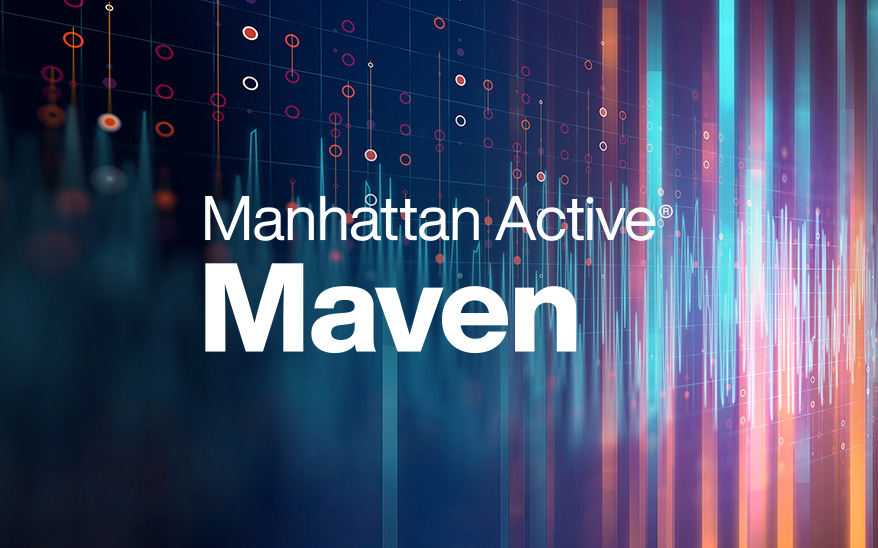Understanding Cloud Native Architecture
Cloud native refers to a software approach to building, deploying, and running modern applications that fully exploit the advantages of cloud computing. Only cloud native applications have the intrinsic ability to securely, in real time, scale to meet demand, be resilient to failure, and be continuously updated to meet customer demands.
When software applications are referred to as cloud native, it means it is accessed via an internet connection—often by way of Software as a Service (SaaS) from a cloud service provider—which lives and stores data in the cloud. The best cloud native architecture provides more scalability, resiliency, adaptability, and is seamlessly updatable, ensuring users always have access to the latest software capabilities and innovation.
The Cloud Native Computing Foundation (CNCF) states that “Cloud native technologies empower organizations to build and run scalable applications in modern, dynamic environments such as public, private, and hybrid clouds. Containers, service meshes, microservices, immutable infrastructure, and declarative APIs exemplify this approach.”
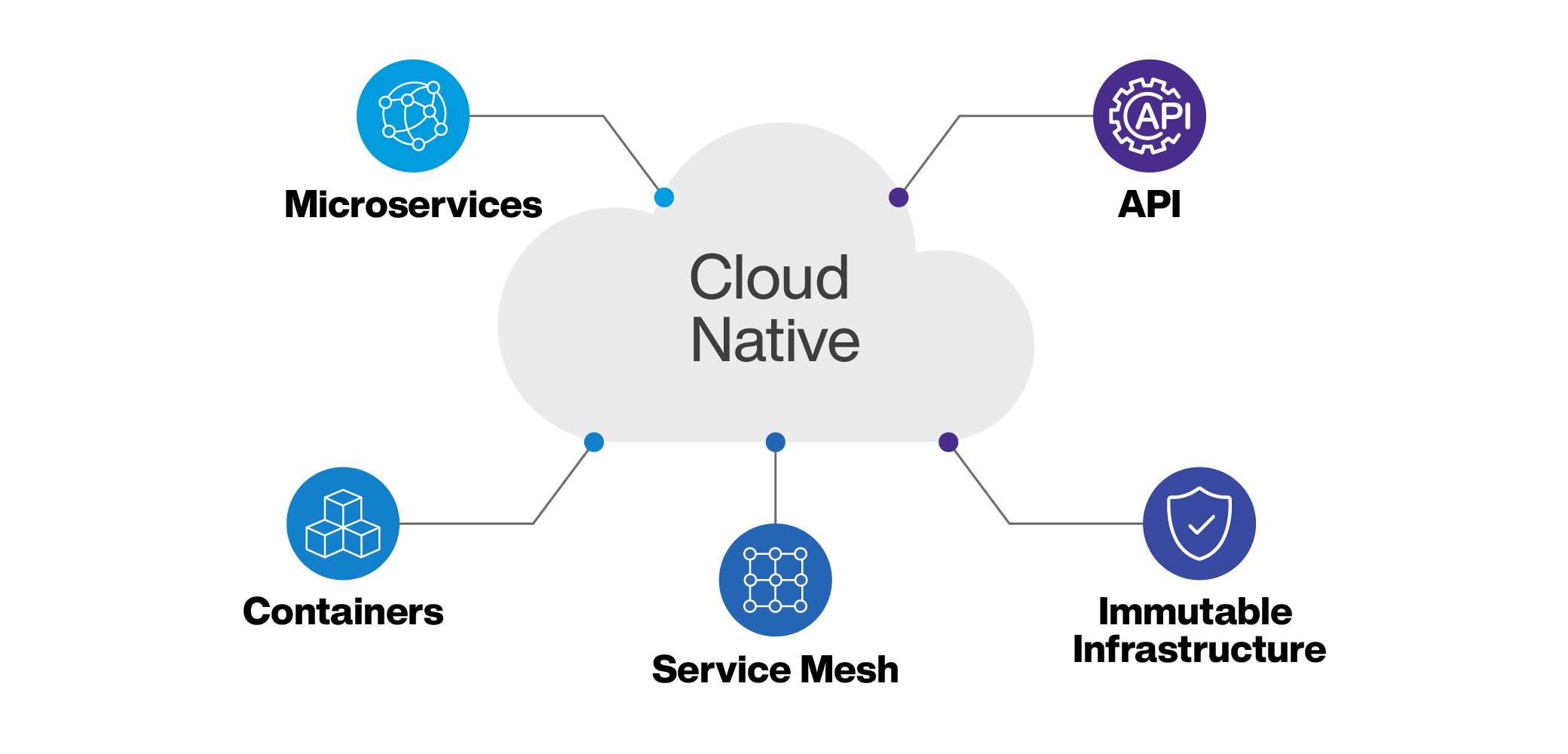
Why Is Cloud Native Technology So Important in Today’s Supply Chain World?
Cloud enabled and legacy cloud software solutions are often referred to as software that “runs on the cloud” or is “hosted in the cloud,” due to its ability to run in a remote data center. However, these cloud services cannot take full advantage of cloud native technology architecture as they were not born in the cloud and do not have the same capabilities as software that is born in the cloud. As a result, legacy and cloud enabled services do not possess the ability to take full advantage of cloud native architecture and struggle with extensions, implementations, upgrades, scalability, and more.
Cloud native services are essential for supply chain commerce solutions in today’s market as retailers, manufacturers, and distributors gain access to enterprise-wide supply chain capabilities that can adapt to the stresses of modern supply chain management quickly, easily, and profitably. Modern cloud native applications are built with microservices, utilize APIs extensively, and can leverage the scalability of the internet to harness vast amounts of cloud computing power.
These differentiators make cloud native services more dependable, scalable, and affordable by saving costs via reducing the number of physical installations of servers and data centers—with no required groundwork on site—if that is what the user desires.
What Is Cloud Computing?
The term cloud computing refers to services enabled via the internet that allow users to store large amounts of data in one place, can be accessed from anywhere at any time, and does not rely on constant management by the user. These services include data storage, applications, development tools, computer resources, networking solutions, and more.
When a business decides to move its software to the cloud, it relocates IT infrastructure offsite, normally housed at a data center run by its cloud computing provider. The industry’s best cloud native providers ensure that they are the nucleus of advanced cloud native services, in charge of delivering and managing IT infrastructure, integrating solutions, and applying the latest innovations and capabilities to their software to keep pace with ever-changing supply chain demands.
What Is Cloud Enabled?
Cloud enabled applications and solutions were originally made via on-premises software but have been modified to run in the cloud. This requires a migration of software services to the cloud, enabling the software to run from a web browser with its original built-in features still in place.
In contrast, software built with cloud native architecture was born in the cloud and designed to live in the cloud. This software can thus capitalize on virtualization and containerization, use an API extensively, and take advantage of cloud based technologies like microservices. Cloud enabled software is limited by monolithic databases that prevent it from having the same resilient, adaptable, and scalable capabilities as cloud native services.
What Are the Benefits of Cloud Native Technology?
Cloud native technology provides features and benefits that allow users to get a leg-up on business competitors who do not have access to the latest and greatest software. The benefits of cloud native architected applications are:
1. Increased agility- Users can deploy, integrate, and develop cloud native applications seamlessly and quickly across the entire network.
2. Increased efficiency- Users can build scalable applications with ease and developer collaborators can deliver applications more efficiently with agile building, testing, and releasing of the software.
3. Reduced costs- Cloud native application technology eliminates the need to maintain physical software infrastructure—resulting in more savings and lower overall cost of ownership—and provides automated software delivery that reduces time to market.
4. Automation- Cloud native automation features provide continuous updates and software changes frequently, as well as automated scaling, monitoring, and self-healing to optimize its software capabilities.
6. Increased resiliency and availability- Cloud native applications provide resilient and easily accessible software apps that work offline in the event of an outage and can implement updates seamlessly, with no downtime in day-to-day business operations.
6. Independent services- Enables the user to build, manage, and deploy cloud native applications individually and separately from other cloud native architecture solutions.
What Is Cloud Native Architecture?
Cloud native architecture refers to software applications that were designed to live and function in a modern cloud environment to effectively build highly scalable cloud native solutions, compared to legacy and cloud enabled software that was designed on-premises.
The best cloud native solutions enable anytime, anywhere global access, are maintained with relative ease, built with modular components of cloud microservice architecture that are easy to update and replace, API-first systems, and are headless platforms that can develop and deploy the user experience freely and flexibly.
Cloud native architecture consists of vital technological pillar components that enable applications to possess highly scalable, adaptable, and resilient functionality. The CNCF mentions that features such as declarative APIs, microservices, containers, service meshes, and immutable infrastructure exemplify the cloud native approach, here’s how and why:
What Is an API?
An Application Programming Interface (API) is the method by which computer programs communicate with each other to exchange information. Cloud native services, including microservices, use an API to communicate microservice needs and provide a contract of service between two applications. This allows the two applications to share data under designed rules and requests that take place under a request and response cycle, which is often defined as the requester application serving as a “client” and the application responding to the request as the “server”. This interaction provides documentation of what each “client” wants and the results the “server” can provide. An API has restrictions on what can and cannot be asked of it, which provides more efficient and productive communication between the two programs.
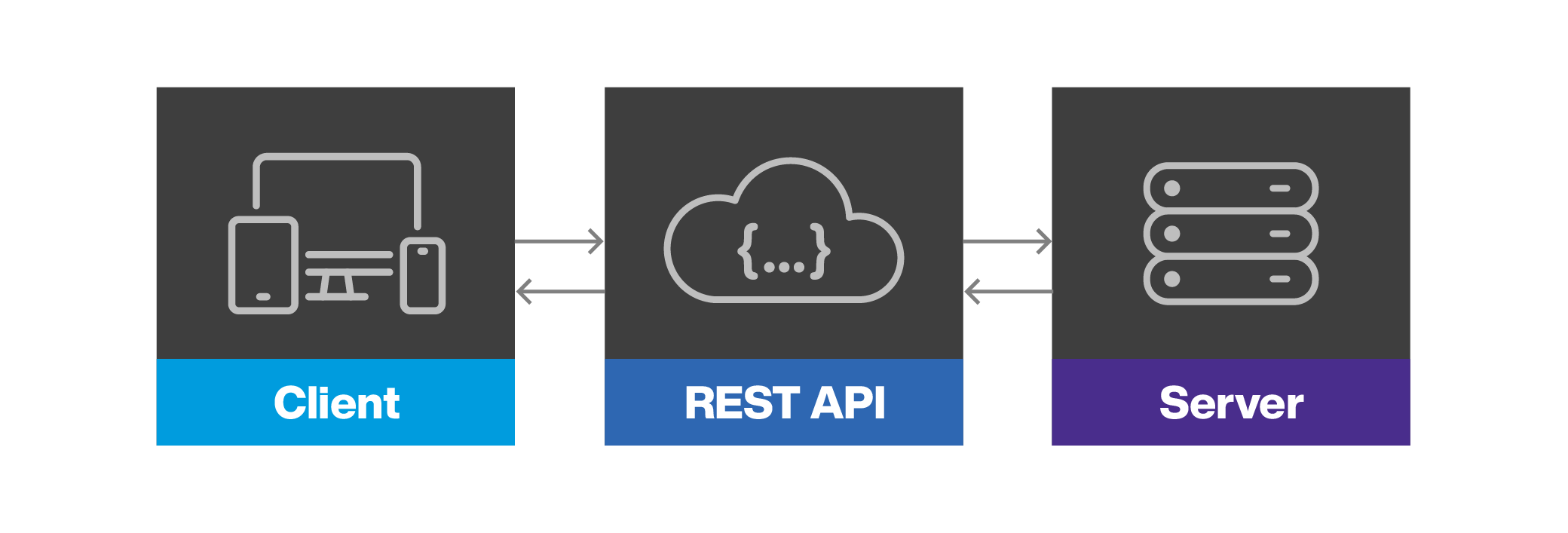
What Is a Declarative API?
The term declarative API refers to an API that provides a statement on how it wants a system to operate, focusing on the result. This differs from imperative API code that explains a sequence of commands on how to change the system to the desired state. Essentially, designing an API to be declarative allows the user to bypass the understanding of backend application architecture and only requires telling the system what the end result is that you want from the service.
What Is a REST API?
A REST API (often also referred to as a RESTful API) is an API that conforms to the guiding principles of a REpresentational State Transfer (REST) software architectural style. A REST API can be easy for developers to implement due to its versatile ability to support a multitude of data formats and programming languages, as long as it follows the REST architectural principles, the key aspects of which include:
- Resources: Central to the RESTful approach, resources are represented using predictable URIs (Uniform Resource Identifiers). For example, in an Order API, each order is a resource with its own URL, /api/orders/123 for example.
- Stateless Communication: Each request from a client contains all the information needed for the server to fulfill that request. The server does not store session information between requests.
- Representation: Resources can have multiple representations, e.g., JSON or XML. When a client interacts with a resource, they are interacting with its representation.
- Cacheable data that stores responses from the “client” and labels it as cacheable or non-cacheable for seamless interactions.
- Response Codes: RESTful APIs use standard HTTP status codes to indicate the success or failure of an API request. For example, 200 OK for successful requests, 404 Not Found for resources that can't be found, and 500 Internal Server Error for server errors.
- Authentication: Authentication in RESTful services ensures only authorized users access resources. Common methods include Basic Authentication and Token-Based Authentication, where the server validates credentials, with JSON Web Tokens (JWT) being a popular choice
- Verbs: RESTful APIs use standard HTTP methods, most commonly:
-
- GET: Retrieve data.
- POST: Create data.
- PUT/PATCH: Replace or update data.
- DELETE: Delete data.
Manhattan Active® API follows the REST architectural style, with predictable resource-oriented URLs, stateless microservices, accepts and returns JSON, and with standard HTTP response codes, authentication, and verbs.
What Are the Features and Benefits of an API?
This data exchange between applications and systems not only provides seamless connection of in-house infrastructure via cloud native app development but also simplifies integration with other third-party developers and business partners by providing them access to application data and functionality.
Applications that take a modular approach to functionality utilize an API to develop application stability concurrently. The benefits of doing so include:
- Shared Framework - An API provides a shared framework between two applications that enable it to relay information within a defined and understandable manner, enabling improved scalability and integration.
- Seamless Integration - Companies can work together through platforms thanks to an API’s communication capabilities, which enable improved automation and easier workforce collaboration.
- Advanced Innovation - An API enables added innovations to existing workflows so they can be accomplished more easily and with fewer steps, offers innovation flexibility by sharing new services with either a business collaborator or an existing market, and can access new markets to drive digital transformation.
- Tight Security - There are multiple levels of security that an API provides during communication, including authentication credential requirements between API calls, cookies and query strings, and HTTP headers. API Gateways provide one single access point for an API to be accessed in an application, enabling control over authentication, authorization, and other security requests.
Lastly, by definition, API-first systems are completely open. Technologies built with APIs from the ground up provide complete control of the entire platform. A comprehensive, searchable, self-help knowledge repository offering quality technical documentation demonstrating platform capabilities and resources to aid in solution development is the cornerstone of API-first platforms like Sitecore® OrderCloud®.
What Are Microservices?
Microservices architecture is a method of software development that consists of many independently deployable applications, each with its own set of unique services, that are built to interact with each other through a shared fabric. With each microservice application serving a specific function—while simultaneously communicating with other systems to serve an overall business objective—updates, deployment, and scalability to meet demand can happen separately for each function.
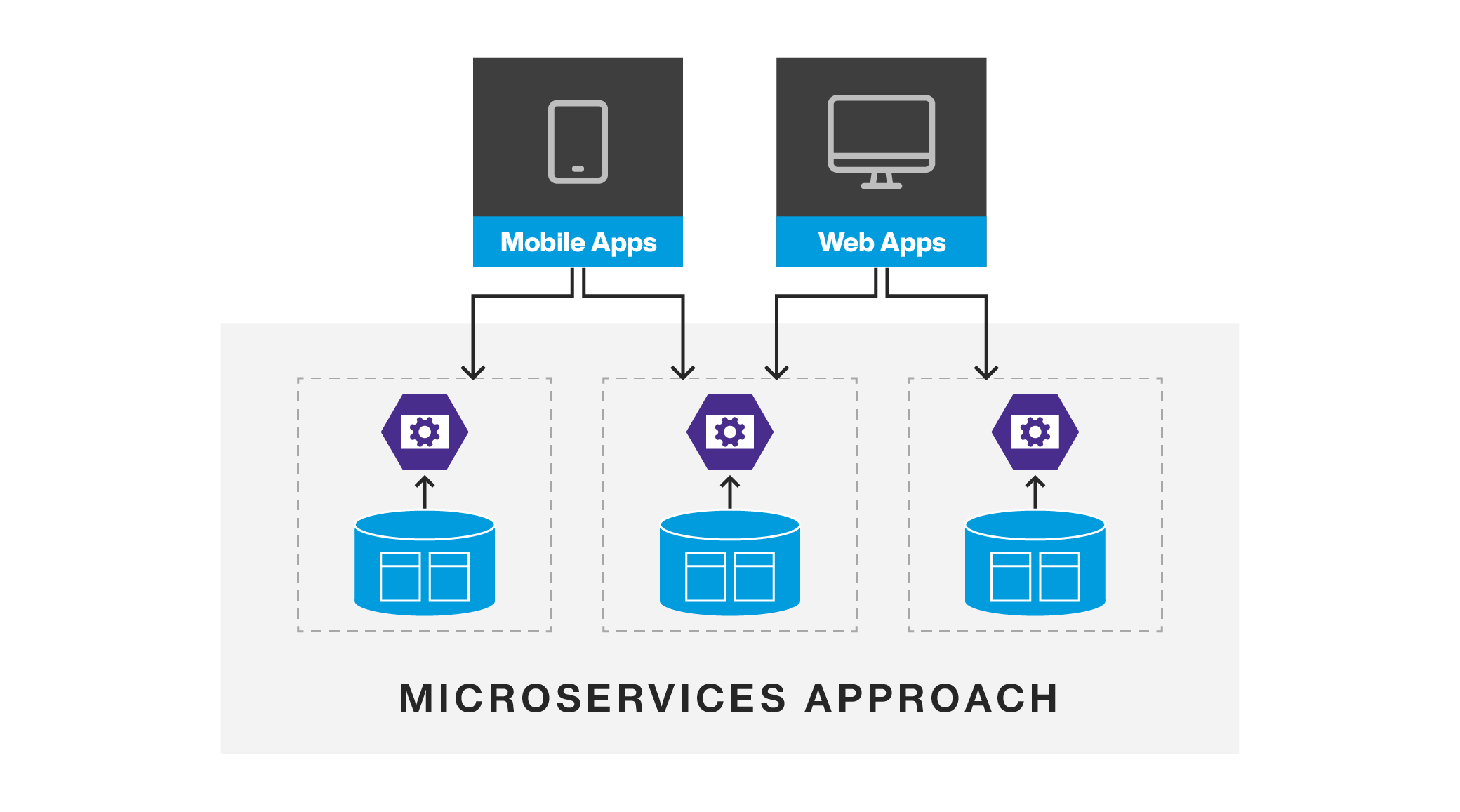
Developers who utilize microservices architecture can create, maintain, and improve new services independently, linking info through a shared data API and communicating using standard protocols such as HTTP/HTTPS, gRPC, WebSocks, or AMQP.
With legacy and monolithic architecture that is not the case. Traditionally, software was built as a single, autonomous unit and any changes to that software’s application, even a small section of it, can affect other service components, often resulting in the build and deployment of an entirely new version of the application.
These restrictions found in monolithic software suppress innovation and agility and prevent companies from capitalizing on new business opportunities once they arise. Below is an illustration of how both monolithic and microservice applications differ, highlighting the functions of monolithic applications that share the same database versus the microservice approach of self-contained data storage.
What Is a Stateless Microservice?
A stateless microservice does not maintain any state across calls and does not store data between requests. It does not rely on previous information, making it so that any microservice can handle any request independently. This allows for scalability across numerous instances without impacting functionality. Stateless microservices provide an easier approach than stateful microservices, which store and manage states over multiple requests.
What Are the Features and Benefits of Microservices
Microservice-based architecture provides features that enable a plethora of benefits for supply chain leaders and retailers, a few of the more notable benefits include:
- Negates the need for system-wide updates and possesses the agility required to make upgrades and modifications to each service seamlessly.
- Reduces the cost of required infrastructure as microservices can more efficiently utilize code and underlying infrastructure.
- Provides more resiliency by limiting downtime as a result of no single point of failure, due to the spread functionality across many microservices.
- Increases budget savings through faster iterations and less downtime.
- Increases agility by building independently deployable services that do one thing well, which allows developers to focus on only updating relevant pieces of an application.
- Reduces risk of code freezes, downtime, or lost commerce opportunities by allowing productive commerce environments to remain operational during the process of updating and applying changes.
Microservice-built architecture provides an always-current, run-anywhere, cloud native system that enables businesses and retailers to get an edge on the competition. There is no longer a need for downtime due to upgrades, testing, and patches. Or seasonal, pre-peak trading lockdowns. Microservices are very targeted in functionality and scope and its codebase is small and manageable, thus unlocking more modification possibilities. This includes everything from initiating a simple workflow change in a mobile app to wiring in an external promotions engine to connecting API calls to a customer relationship management (CRM) application. And microservices are infinitely expandable, enabling users to add new components as needed.
It’s perfect for a modern omnichannel retail environment that requires separate functionality and applications for store order management, point of sale, inventory and fulfillment, and customer engagement, while at the same time, all operate together as part of a larger suite of solutions—like with Manhattan Active® Omni.
What Are Containers?
Containers bundle microservice code—and other vital related file information, dependencies, and runtime—in packaged software that contains everything required to run the application within cloud native services. Container files are packaged in a container image. Images are stored in a container registry which are often stored in the cloud or a data center in close proximity to the cloud applications that run them.
Each container can isolate applications for deployment and run independently from the operating system while still sharing the underlying operating system and host resources. This allows users and developers the option to deploy cloud native services on premises or in the cloud.
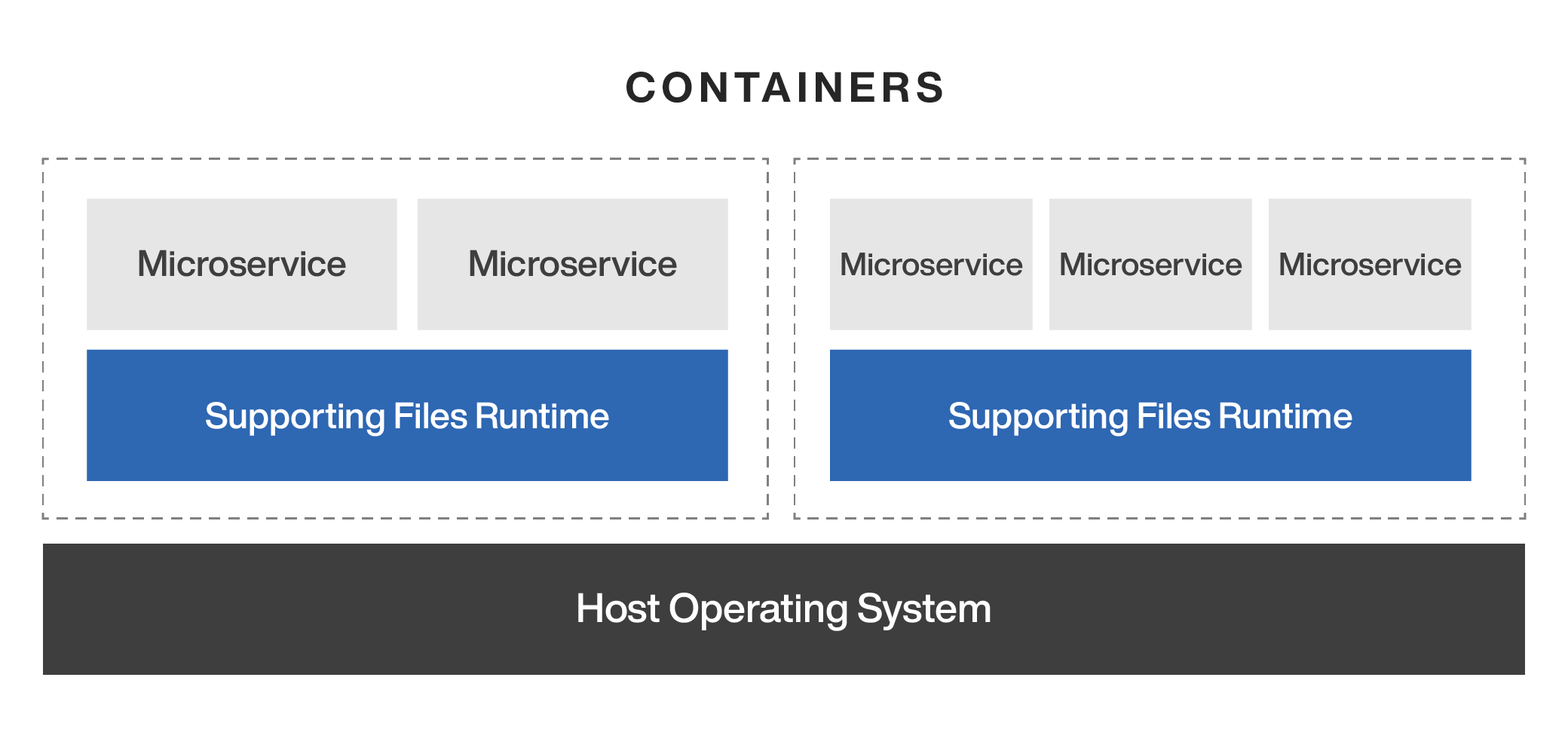
What Are the Features and Benefits of Containers
Containerization of microservices provides many software benefits for retailers and supply chain commerce leaders that directly correlate to positive business outcomes by eliminating the need for separate machines to run applications. These benefits include:
- Enables applications to be deployed fast and easily without disrupting the base software or system.
- Companies and retailers can be more agile and responsive to business opportunities.
- Users can seamlessly augment systems with the latest technology.
- Retailers can react to customer demand faster with changes to products, offers, and promotions.
- Provides increased scalability and efficiency by scaling the cloud computing resources each application needs.
- Uses fewer computing resources than legacy application deployment.
What Is Service Mesh?
Service mesh is a software layer in cloud infrastructure that manages communication and data sharing between applications within a network, found in cloud based applications such as microservices and containers. This technology capability enables fast, reliable service-to-service communication, network management scalability and flexibility, and high availability via software controlled by APIs. Further tasks including monitoring and security can be implemented apart from the service itself via proxy instance sidecars.
What Are the Features and Benefits of Service Mesh?
Service mesh addresses many obstacles that come with computer network service communication—such as unreliability, security concerns, and slow processes—by managing traffic between services with efficient and ideal functionality. It provides beneficial application features that include load balancing, service discovery, and encryption and failure recovery—as well as beneficial software component capabilities that provide:
- More reliability- Service mesh improves the efficiency and reliability of microservice and container communication by understanding and managing service requests at the application level, with beneficial features that include better traffic management, support for service discovery, and load balancing.
- More control and agility- Users gain greater control over deployments and testing and faster development of applications.
- More observability- Users gain better insights into internal health and behavior of services with real-time data on system behavior, distributed tracing support, and traffic and latency monitoring. Third-party integrations can also provide further monitoring.
- More security- Service mesh provides secure communication between services by overseeing authorization, authentication, and encryption of traffic between service-to-service communication.
What Is Immutable Infrastructure?
Immutable infrastructure is a cloud native approach where the cloud native computational infrastructure utilized for deployments and services is not changed, even after deployment. Instead of updating existing infrastructure components in place, new instances are provisioned to replace the old ones, ensuring a consistent, predictable, and reproducible environment – all enforced via automation. This approach minimizes inconsistencies and drifts in configuration, enhancing reliability and scalability. By treating infrastructure as disposable and reproducible, organizations can achieve faster deployment cycles, improved fault tolerance, and seamless scalability, all while reducing the challenges associated with manual interventions and configuration drift.
Containers are a prime example of immutable infrastructure as any changes made to containers require the creation of a completely new version of the container image.
What Are the Features and Benefits of Immutable Infrastructure?
Immutable infrastructure in cloud native services prevents and identifies unauthorized changes, making it easier to see and deal with security risks. On top of that, it provides version control through required automation to create new infrastructure, and, as a result, establishes:
- No configuration drifts, reducing the infrastructure’s vulnerability to cyber-attacks.
- No unauthorized changes, which reduces the risk of mistakes or unspoken changes and provides easier identification of security risks.
- Elimination of server patching and configuration changes due to up-to-date services and applications.
What Is Cloud Native Application Development?
Cloud native application development is the process in which developers design and build—and later deploy, analyze, and maintain—applications in a cloud environment. There are certain best practices developers will undergo to ensure continuous application improvement, improved software agility to meet changing demands, and advanced application features that provide the most up-to-date capabilities, depending on the business problem the developers are solving. Those best practices involve:
DevOps
DevOps is a methodology that developers utilize where both the development (Dev) and an organization’s operations (Op) coordinate with each other to unite all aspects of software development—and together provide the tools needed to increase the speed, efficiency, and security of software development and deployment. DevOps breaks down barriers of traditional siloed software roles and instead integrates developers, IT operations, engineers, and security to improve response time for customer needs and achieve beneficial business outcomes faster.
Continuous Integration (CI)
Continuous integration (CI) is a software development practice where developers integrate automation, merging, and testing of code into a shared code branch. This allows changes to be made without fail and frequently in the development stage, as smaller changes made during development enable developers to catch and fix bugs faster, saving costs on changes made early in this stage as opposed to much later down the road. CI automatically tests new code changes and identifies errors instantly. In contrast to legacy practices that would have developer teams work separately from one another, resulting in having to make changes once work is completed, continuous integration provides a shared view and workspace, where changes are made and resolved immediately. This also enables updates to be delivered to customers quickly.
Continuous Delivery (CD)
Continuous delivery is a software development practice where code changes—such as building, testing, and deployment—are made in a testing environment in preparation for production release. CD enables developers to automate testing and release new features, fixes, and updates to existing services. CI works congruently with CD to automate testing and produce deployment-ready services, such as microservices, to place in the cloud.
What Are the Cloud Native Principles for Application Development?
The CNCF in its definition of cloud native states that these above technology components “enable loosely coupled systems that are resilient, manageable, and observable. Combined with robust automation, they allow engineers to make high-impact changes frequently and predictably with minimal toil.”
There are certain cloud native principles that are standard across the board when utilizing cloud native platforms to build cloud native application services. The technology principles that cloud native applications are equipped with are:
I. Resiliency
There are multiple ways in which cloud native architecture can drive resiliency within its technology to withstand any stresses or unforeseen changes. The loss of data when disaster strikes to data centers can be devastating to businesses without cloud native services. This is not a concern for cloud native technology users as virtualization technologies enable cloud based data recovery models that clone data, store it, and make it readily available if anything were to ever happen to the original data. Cloud providers also can offer features, such as autoscalers, that can create new copies of microservices in the event that one crashes.
In the omnichannel and retail space, cloud native point of sale solutions with resilient cloud technology prepare stores for the worst when facing disruption. When a store or omnichannel network is disrupted, day-to-day operations are not impacted and all services remain available with zero downtime. Once connectivity is restored, all transactions and devices are immediately synced back to the cloud.
II. Scalability
Scalability and resilience go hand-in-hand when discussing cloud native services as scalability in a sense can be considered a form of resilient technology. Businesses running their own data center can spend time-consuming hours reserving servers in case an estimated capacity is reached, can underestimate demand resulting in site issues, and can have excess spending if capacity is not reached.
Once applications transform from monolithic architecture to microservice-based architecture, microservice technology can automatically scale to meet application and business needs. For example, retailers using cloud native solutions can scale up resources during peak season and reduce capacity when demand subsides.
III. Observability
Cloud native service observability is key to resolving and preventing issues by understanding how multiple technological components interact with each other and how efficiently they are doing so. Comprehensive data collection such as monitoring, tracing, and logging to record data is important in identifying application running processes through data analysis, and dealing with code debugging, errors, and exceptions when they arise.
Understanding how well your systems are working is vital for fixing any issues quickly and resuming service for the user as quickly as possible. API call observability by cloud providers also helps verify if an API is configured properly, ensures that any potential malicious activity is seen and resolved immediately, and ensures all cloud native services are running as smoothly as possible.
IV. Automation
Automation is what helps bind all cloud native services together. When the network or application services go down, software resiliency is made possible through automation by automatically saving data and syncing all data back to the cloud once network connectivity is restored. Future-proofing your technology is made possible through automatic upgrades that occur all at once and without disruption, enabling the implementation of continuous software delivery and innovation. Scalability is achieved through cloud native service capabilities that automatically scale up or down to match demand. Automation management features allow you to observe how your automation is running and address any errors that occur. Cloud computing environments drive automation to construct immutable infrastructure.
Automation also makes standardizing application processes seamless by applying a standard application delivery definition and process. With cloud based applications, DevOps teams can automate as much as is needed to enable the best possible workflows and software outcomes.
V. Security
Due to cloud native services living and being provided via the internet, security risk is an area of concern for users looking to migrate to the cloud. Depending on the cloud provider there are various levels of security that can be applied to cloud native services. One positive that the microservice approach provides is that if a security breach occurs in one system it is less likely to be able to attach itself to others as each has its own separate data storage, compared to a monolithic approach. In an ideal cloud native service world, however, that initial breach does not occur.
This is made possible through cloud native application protection platforms and cloud native security architecture that provides visibility of all applications running to allow DevOps teams to leverage technology policy and process to keep data not only secure but accessible to those who need it. Security tools such as OAuth, OpenID, SAML, and HTTP Basic Authentication provide authorization, authentication, and other layers of security that help protect data and digital assets from security threats.
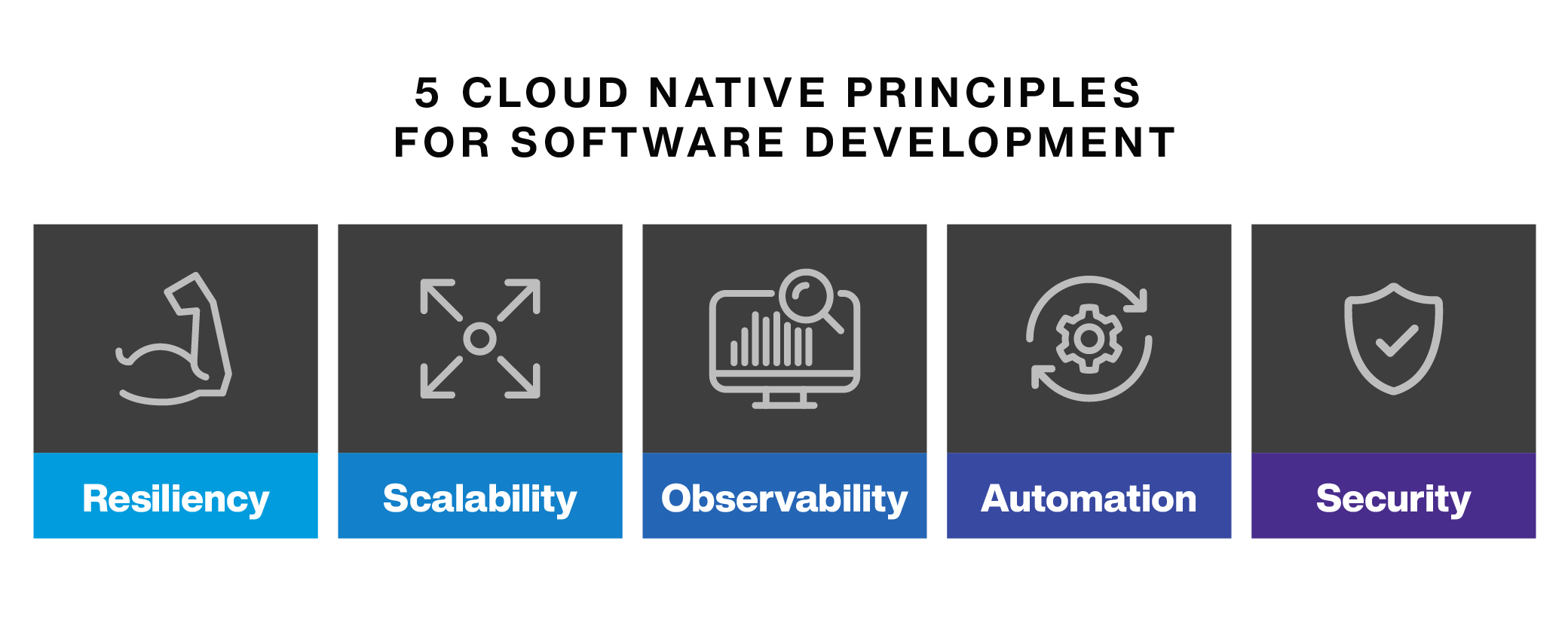
Why Invest in Cloud Native Technology for Your Business?
Cloud native architecture keeps you ahead of the latest technology with evergreen software that is continuously updated and enables you to drive unprecedented application scalability, adaptability, visibility, and resiliency within your technology stack. Microservices allow functionality to be applied individually within the cloud infrastructure and, through microservice APIs, can communicate with each other and outside systems to divide and assign resources based on application needs. Cloud native technology is a differentiator for the manufacturers, distributors, and retailers who choose to wield the power of the cloud.
For retailers, digital transformation has been expedited in a post-pandemic world, and omnichannel customers will only continue to gravitate toward convenient and seamless shopping experiences. The cloud native approach is the most cost-effective and mission-critical way to satisfy your associate and customer omnichannel needs. Some of the invaluable benefits of cloud native technology for retailers include:
- Run your systems from anywhere- Retailers only need access to the internet via an app on any device to get real-time access to business-critical IT systems, such as enterprise order management, point of sale, store inventory, store fulfillment, and customer engagement solutions. This enables colleagues to gain free access to these solutions, with the ability to augment on a global scale.
- Access evergreen, always-on applications- The modular components of cloud microservice architecture are easily updatable or replaceable, never needing downtime for maintenance, disruptive upgrades, or test patches. Capacity is also automatically scalable up or down, with no service interruption.
- Apply new innovations, directly impacting profits- Technology leaders do not need to worry about maintenance, leading to more time spent on innovation and problem-solving, which as a result makes it cheaper, faster, easier, and less risky to bring new products to market.
- Gain a single view of truth- Enterprise-wide visibility enables everyone to share the same view of every customer interaction and transaction with your brand, enabling faster and more customized customer service. Store features such as point of sale, clienteling, and fulfillment actions are all also available on a web browser or mobile app, providing everything your associates need in one spot.
For supply chain leaders who require supply chain execution, supply chain planning, omnichannel solutions, or all of the above, the effect cloud native services have on your businesses is unmatched efficiency, flexibility, and performance. And with all solutions unified in Manhattan Active® Platform, you can stay one step ahead of the competition.

Why Manhattan Active® Platform Is the Cloud Native System of the Future.
Future systems are without boundaries, connectively bringing together all data, applications, and infrastructure, uniting humans and machines, and tying organizations and industries together through technology.
Manhattan Active® Platform is the result of over 30 years of supply chain experience, culminating with the sophisticated solutions we now have today that provide supply chain commerce leaders with a path to current and future success. It is the foundation of industry-recognized best-in-class solutions—such as Manhattan Active Warehouse, Transportation, and Order Management—that are all cloud native, composed of microservices, and built to automatically scale to match performance demand. The best part? Its evergreen technology means updates happen automatically and with no scheduled downtime. Users will always have the latest and greatest software capabilities, making them the last solutions you will ever have to buy.
All Manhattan Active solutions are born in the cloud delivered as a software as a service (SaaS), designed to leverage the power and scalability of mature cloud platforms, powered by Google Cloud, and composed entirely of microservices. Microservices enable Manhattan Active solutions to be “containerized” using solutions such as Docker, mySQL, and Elastic to unleash next-level scalability and resiliency.
The microservice-based architecture provides the ultimate canvas for building and delivering extensible and adaptable software solutions. Functional components such as “customer,” “order,” or “shipment” have been broken down to their base levels of capability. Its functionality and data structure are completely self-sufficient, removing the need to rely on monolithic databases across the application.
Each microservice communicates with each other and outside resources through REST API endpoints, extension points, and user interface extension points throughout Manhattan Active solutions. And because each microservice component is independent, there are no duplications of capabilities across separate solution offerings such as order management, point of sale, or customer relationship management. Instead, each capability can be offered as a part of a single, unified commerce platform where components such as “order” or “customer” can be accessed or reused regardless of which user or system is utilizing the capability.
The Software Benefits of Manhattan Active® Platform
Manhattan Active® Platform’s cloud-first, 100% microservice, API-first approach is the main ingredient that makes it possible to deliver solutions seamlessly, but the cloud native, microservice-based platform also provides beneficial software technology characteristics that are:
I. Extensible
Manhattan Active solutions are completely extensible at the data, service, and interface level. Each customer’s supply chain network is unique, which is why we provide the extensibility necessary to customize, adapt, and evolve services and solutions to meet specific customer needs.
II. Evergreen
Users gain continuous access to new innovation with regular releases and can decide which functionality or features to add or not add. Our customers never have to upgrade their software again and need no downtime for major upgrades, saving them costs and resources, and leaving more time to focus on creating better experiences for their employees and customers.
III. Scalable
Our solutions are designed to flex automatically, without the need for human input or oversight, to match the ever-changing real-time needs of each business. Thanks to microservices, when the system requires more volume for particular services, it automatically increases the number of containers activated for that specific capability.
IV. Secure
Manhattan has placed software security as a top priority by adopting some of the highest-level security standards—including authentication based on industry-standard protocols such as OpenID and SAML—that offer sophisticated role-based authorization mechanisms and data protection.
Manhattan Active® Platform is the future system for supply chain commerce. Click the Contact Us link below to take the first step toward the last solution you will ever need.
Deliver On Your Promise to Customers
Get in touch with the Manhattan team to see how we can help.
Everything Works Better With Manhattan Solutions
Manhattan offers a complete breadth of solutions that when unified, provides total coverage for your supply chain commerce needs.

Transportation Management
Manage every carrier, rate, route, and load with Manhattan Active® Transportation Management.

Labor Management
Empower employees to be more productive—and happier with their work—using Manhattan Active® Labor Management’s AI-enabled software.

Order Management
Manhattan Active® Order Management provides stores with visibility into available inventory held anywhere, supporting endless aisle selling.

